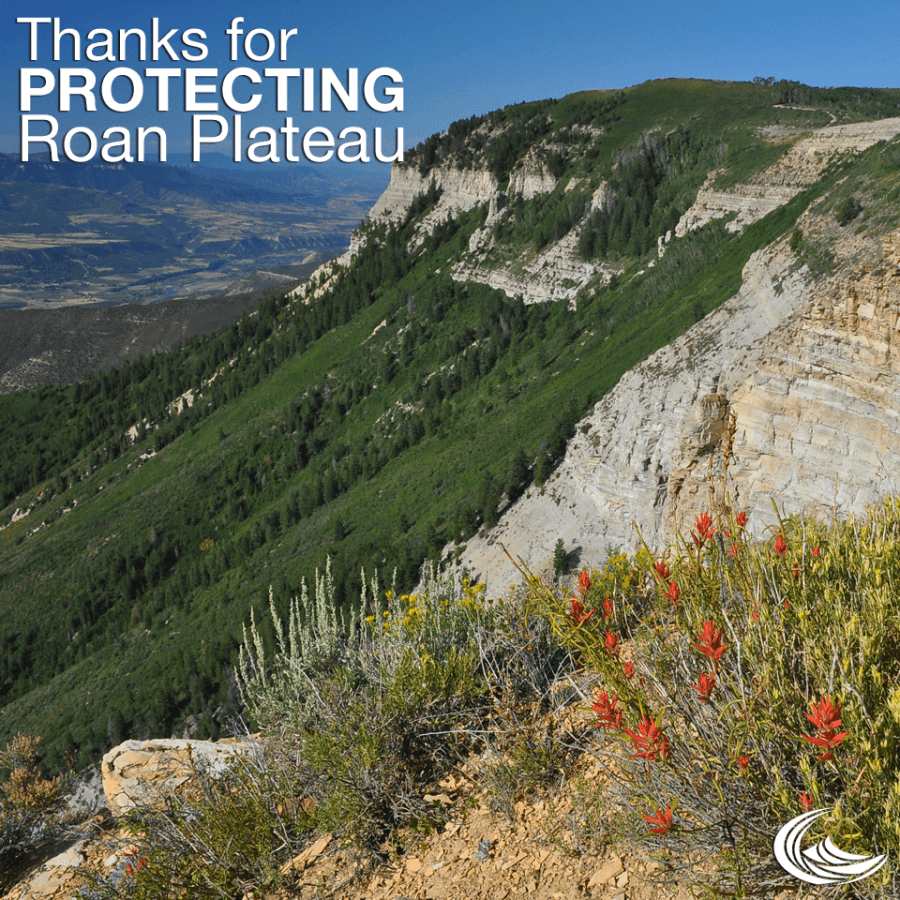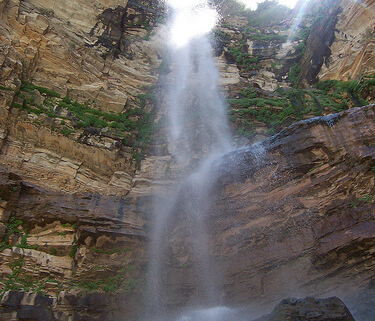Written by Luke Schafer, West Slope Advocacy Director
A little over 10 years ago, I was a newly minted college graduate, completely unsure of what I wanted to do with my life other than knowing that I wanted to live in a place where wild things still existed. I somehow scored an interview with the Colorado Wilderness Network for a job in Craig. I scoured the then still seemingly primitive internet to figure out some sort of background information so I could disguise my ignorance.
 One thing kept popping up again and again, Roan Plateau. The same verbiage of deep woods laced with streams and critter filled meadows abounded. The descriptions and pictures were amazing, truly a place for the wild things I was seeking. Streams teeming with native trout; waterfalls cascading over cliffs; lush hanging gardens soaking in the spray; aspen glades echoing the bugle of bull elk–all of these scenes accurately depict the Roan Plateau. I, of course, tried to work Roan Plateau into every available opportunity into my interview, which wasn’t terribly applicable since the job was to work on Vermillion Basin and other areas in far Northwest Colorado. A few weeks later I was packing up and moving west, eager to protect places like the Roan.
One thing kept popping up again and again, Roan Plateau. The same verbiage of deep woods laced with streams and critter filled meadows abounded. The descriptions and pictures were amazing, truly a place for the wild things I was seeking. Streams teeming with native trout; waterfalls cascading over cliffs; lush hanging gardens soaking in the spray; aspen glades echoing the bugle of bull elk–all of these scenes accurately depict the Roan Plateau. I, of course, tried to work Roan Plateau into every available opportunity into my interview, which wasn’t terribly applicable since the job was to work on Vermillion Basin and other areas in far Northwest Colorado. A few weeks later I was packing up and moving west, eager to protect places like the Roan.
Despite being completely different ecosystems and Vermillion suffering a serious attention deficiency in comparison to Roan, the places are close relatives. They are both lines in the sand that the Colorado and national conservation communities made: they are places that were too wild to drill and places where we will fight until they are permanently protected. In large part, the protections gained so far for Vermillion were possible because of the Roan Plateau.
 The efforts around the Roan Plateau have been a game changer in so many ways. While the Colorado conservation community had united against Two Forks Dam in the foothills near Denver, it hadn’t really ever made a collective stand on a public land issue and let alone a public land issue on the rural West Slope. The Roan was the rallying point for Prius-driving environmentalists from Boulder and tobacco-chewing sportsman from Meeker and everyone in between. It wasn’t simply a NIMBY reaction, it was a collective recognition that we need places like Roan Plateau to exist for our own sake.
The efforts around the Roan Plateau have been a game changer in so many ways. While the Colorado conservation community had united against Two Forks Dam in the foothills near Denver, it hadn’t really ever made a collective stand on a public land issue and let alone a public land issue on the rural West Slope. The Roan was the rallying point for Prius-driving environmentalists from Boulder and tobacco-chewing sportsman from Meeker and everyone in between. It wasn’t simply a NIMBY reaction, it was a collective recognition that we need places like Roan Plateau to exist for our own sake.
Along the way, people from coast to coast began to learn about the island in the sea of development, about the abundant wildlife, rare plants and scenery under siege on the Roan Plateau. All these disparate groups were working together to elevate the issue on a national stage with an ideal held in common—protect the top of the plateau.
Recently, a deal which cancels nearly all of the oil and gas leases on the top of the Plateau was announced. It’s more than just a victory for the actual plateau. It was a reaffirmation in both standing your ground as well as reaching out to work with others. Over the years the influence of this collective approach has been felt in places like Vermillion Basin, Hoback Junction, WY, the Rocky Mountain Front in Montana and hopefully, soon with the Greater sage grouse all across the West.

So while we celebrate this step in realizing protections for Roan and the promotion of responsible development, I and plenty more of my colleagues at Conservation Colorado and elsewhere will carry on what I think is the Roan’s real legacy, uniting the disparate interests that give a damn and continue to fight for Colorado’s future.
Your West Slope Advocacy Director,
Luke





